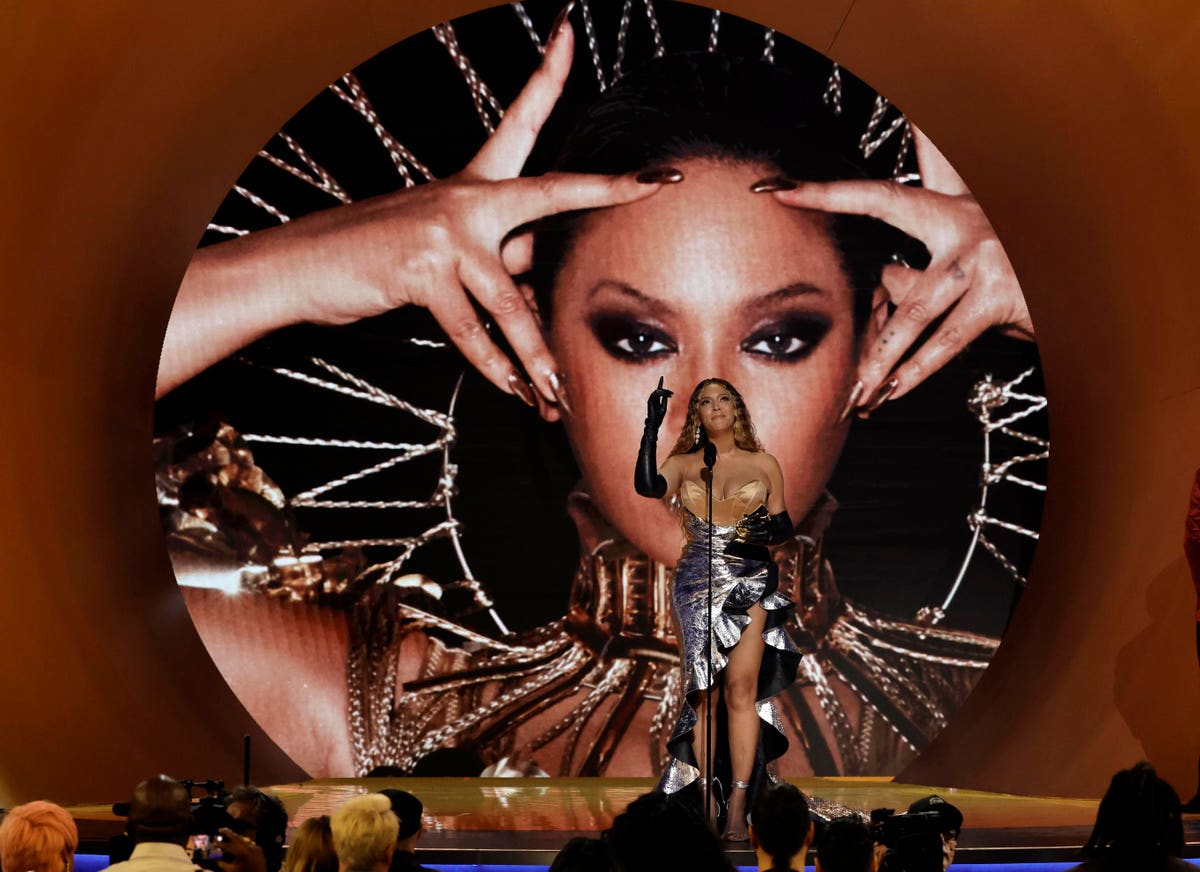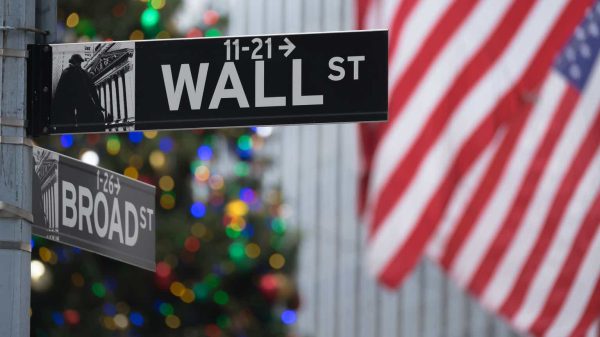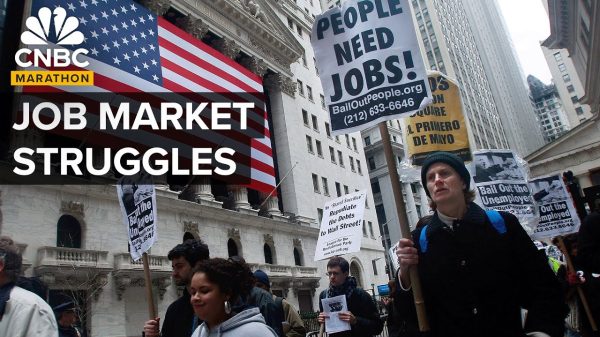It’s good to be queen.
Beyoncé Giselle Knowles-Carter — also known as Queen Bey — could clear nearly $2.2 billion from her “Renaissance” World Tour — some $600 million more than the $1.6 billion Taylor Swift could earn from “Eras.”
Those eyepopping estimates are based on the most optimistic assumptions of the number of fans buying tickets at their concerts and high average ticket prices of about $700.
They also assume the artists take home a considerable share of merchandise proceeds and pay tour expenses of 20% of revenues — leaving them with the other 80%.
“Renaissance” could gross between $275 million and $2.57 billion from tickets alone by the time it ends in September. Beyoncé’s most optimistic ticket revenue estimate — $2.57 billion — is well above Era’s $1.9 billion most optimistic box office.
Due to fans’ pent-up desire to attend in-person concerts at the end of a more than three year pandemic, using optimistic assumptions makes sense to me.
Born in Houston, Texas, Beyoncé entered the music industry in the 1990s with Destiny’s Child; achieved solo success with number-one albums (like Dangerously in Love and B’Day😉 headlined the NFL Super Bowl 50 and so much more.
Odds are good “Renaissance” could be Beyoncé’s most lucrative concert tour — possibly exceeding the revenue she has earned from all her previous concerts combined.
How Beyoncé’s Business Strategy Differs From Swift’s
In addition to being exceptionally talented artists, Beyoncé and Swift are excellent business executives.
A key part of the executive job is choosing a business strategy — making decisions about which products to sell, where to sell them, and how much to charge customers — and executing it flawlessly.
Both artists pursue a differentiation strategy — meaning that they charge premium prices for a higher quality product that may cost more to produce. (Another common business strategy, cost leadership — selling a good product at the lowest price with lower costs — is probably rare among performers).
The experts I interviewed — who have not reviewed their contracts — highlight some business strategy differences and similarities between them:
- Swift may retain a larger share of ticket sales than does Beyoncé.
- Swift has a more extensive merchandising strategy than Beyoncé.
- Beyoncé and Swift have high tour expenses and their average ticket prices for their 2023 tours are around $700.
Swift and Beyoncé share of ticket sales
Swift probably receives between 100% and 110% of ticketing revenues. As David Herlihy, a Northeastern University Teaching Professor and Music Industry Program Coordinator, told me, “Her promoter should be happy to pay her more because he does not have to assume any risk that her concerts will not sell out.”
Beyoncé may receive close to that amount. “Beyoncé could have an escalating rate (based on number of tickets sold) or a flat percentage per ticket. Considering her prior success, she’d certainly command in the upper 90th percentile or more.” according to my May 6 email from Armen Shaomian, University of South Carolina Associate Professor, Entertainment Management.
Sponsors and other partnerships can help top artists guarantee high concert proceeds. “Beyoncé’s case sponsors include several major corporations, such as CITI, Verizon, and Tiffany. Her entire Renaissance tour production is handled by her production company, Parkwood Entertainment, and promoted by Live Nation, which drives a greater percentage of the revenue directly to Beyoncé,” Shaomian explained.
Swift and Beyoncé merchandising strategies
Swift and Beyoncé have different brands and varying merchandising strategies.
Swift has an extensive merchandising strategy. As Herlihy explained, “At each venue she would be likely to sell out 30,000 pieces of merchandise at an average price of $80 per item. Thirty percent of that would go to the venue and the remainder would go to Swift and the promoter.”
This initial estimate of her merchandising revenues was low. As he told me in April, “I recently discovered the venues may charge less of a commission [20% rather than the 30%] I originally cited. Also, that commission is within Taylor’s purview to negotiate down.”
Swift’s strategy is more extensive than Beyoncé’s. “Swift’s aim is to build a lifestyle brand for a certain demographic. Looking at it from a fan angle, Swifties have access to a plethora of year-round options when it comes to fan merch,” Shaomian noted.
These include 10 “Eras” albums she has been selling on her website since January along with “hundreds of merch items, ranging from vinyl albums to activity books and ornaments,” he wrote.
Beyoncé’s website — which offers downloads of her singles and some of her vinyl records for purchase — features far less merchandise than Swift’s does and will generate less profit than hers.
However, Beyoncé’s lack of online merchandising may result in high priced concert merch. “The lack of merch on Beyoncé’s online shop could also be a part of her strategy, in that tour-specific merch will only be available for purchase during her concerts, most likely at a premium,” Shaomian suggested.
Swift and Beyoncé ticket prices and costs
One thing Swift and Beyoncé share is high average ticket prices. Shaomian told me last month that Swift’s average ticket price is likely $700 or more.
Beyoncé’s average ticket prices could be $685 or more.
On May 6 he told me, “Ticket prices are only going up, and there are large sections of tickets on Beyoncé’s tour dedicated as B-Hive and Club Renaissance close to the stage, along with some shows where the entire floor level is a standing room club setting (Stockholm for example).”
Such tickets are “all sold at a premium. Think of it as a flight having more first and business class seats that are sold at a premium, which pushes up the average fare,” he concluded.
Swift probably keeps 80% of her revenues. As Herlihy explained last year, “She has to pay taxes, her crew, venue rental, and tour expenses — possibly redundant trucks, crews, security, musical instruments, and so on. These expenses could range between 20% and 25% of her revenue.”
He thinks marketing expenses for “Eras” were lower than normal. “Because the shows were an automatic sell out, the expenditure of huge promotion and marketing dollars to stimulate sales was somewhat unnecessary—thus less of a deduction off the top,” he says.
Both artists have high tour expenses. “I have seen quotes of 50 semis for ‘Eras.’ That is huge! I’d anticipate Beyoncé being close to that judging by her last ‘On The Run Tour II.’” noted Shaomian.
Renaissance Ticket Sales Estimates
“Renaissance” ticket revenues could range from $275 million to $2.5 billion.
Conservative Renaissance revenue estimates range from $275 million to $428 million
In early February, Billboard estimated Renaissance would generate between $275 million and $428 million in ticket revenue using the following assumptions to generate the $275 million estimate:
- Renaissance to host 41 shows
- Average ticket price: $200
- Share of ticket revenues: 100%
- Average revenue per show: $6.71 million
With four more shows, Renaissance could generate $300 million in revenue. Billboard estimated in February.
By May 7, the number of Renaissance shows had expanded from 41 to 57, according to Ticketmaster.
Should Beyoncé perform at 57 concerts, using Billboard’s $6.71 million in revenue per show, Renaissance would generate $382 million in revenue.
Using the high end estimate of Billboard’s per show revenue of $7.5 million, Renaissance could generate ticket sales of about $428 million.
Optimistic estimate ranges from $751 million to $2.57 billion
Using more optimistic assumptions about the number of tickets sold at each concert and a higher average price per ticket, I estimate that Renaissance tour revenue could range from $751 million to $2.57 billion. Here are the most significant assumptions I used:
- All 57 concerts are completely sold out.
- The average concert capacity per venue totals 65,860 fans, based on my analysis of data from each venue.
- The low and high average ticket price ranges from $200 (per Billboard) to $678, according to TicketSmarter.
The assumptions about selling out these full venues may be overly optimistic, however, the high ticket prices are consistent with Shaomian’s perspective.
Beyoncé’s Previous Concert Tours
Beyoncé is likely to surpass $1 billion in lifetime gross ticket sales by the time she collects her Renaissance proceeds. As Billboard reported, she “has grossed $767.3 million and sold 8.9 million tickets across 375 shows, including those with Jay-Z and the Verizon Ladies First Tour, a co-headline run with Missy Elliott and Alicia Keys in 2004.”
Here are the proceeds of some of her most recent tours:
- On the Run (2014) with her husband Jay-Z grossed $95 million, according to Billboard.
- Formation World Tour (2016): $256 million, per Complex.
- On the Run II (2018): $254 million in gross revenue, Forbes reported.
If Beyoncé reaches the high end of my most optimistic estimate, “Renaissance” will far surpass the gross revenues of all her previous concerts.
How Much Beyoncé And Swift Will Take Home
Beyoncé could earn higher proceeds from “Renaissance” than will Swift from “Eras.”
More specifically, “Renaissance” proceeds for Beyoncé could range between $710 million and nearly $2.2 billion — using $200-per-ticket at the low end and $648, respectively. That surpasses the profit range of $553 million and $1.62 billion for “Eras.”
“Renaissance” profit
Queen Bey’s profits from “Renaissance” derive from the following assumptions:
- Gross ticket sales ranging from $751 million and $2.57 billion based on the low and high average prices for all 52 concerts.
- Merchandise revenue of about $171 million based on the assumption that she will sell 30,000 items at an average price of $100 (assuming that her prices will be higher than Swift’s since they are only available at the concerts).
- Beyoncé would keep 80% of the merchandise revenue (per Herlihy)
- She would subtract off 20% of her ticketing and merchandise revenue share, per Herlihy, to pay for tour expenses — keeping the other 80% as Herlihy suggested.
“Eras” profit
Taylor Swift — who is about eight years younger than Beyoncé — potentially has many years to surpass what is likely to be a boffo “Eras” box office this year.
Swift could gross between $620 million and $1.9 billion from “Eras” — depending on whether the average ticket price is $215 or $700.
Using similar assumptions regarding her take of merchandise sales at the concerts and tour expenses, Swift would net $553 million — assuming an average ticket price of $215 — and as much as $1.6 billion if her average “Eras” ticket price is $700.
After a three year pandemic, two great artists — and business executives — are charging premium prices to full houses as they cash in on their talent
Read the full article here













